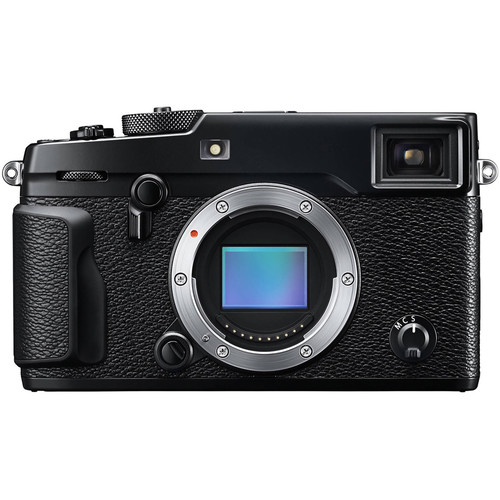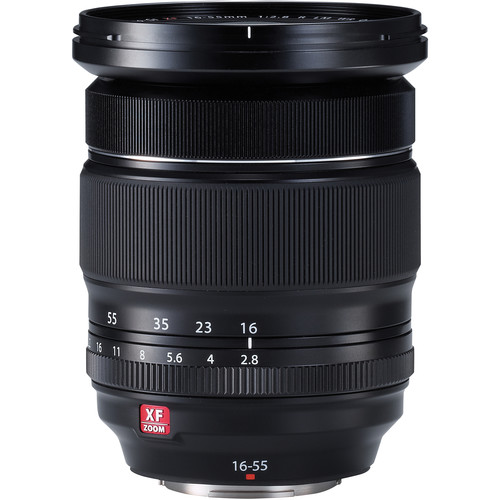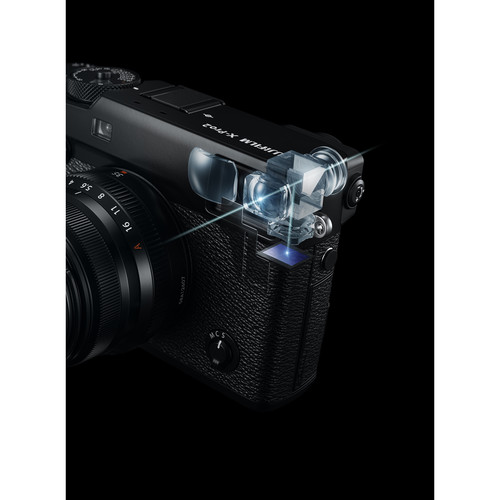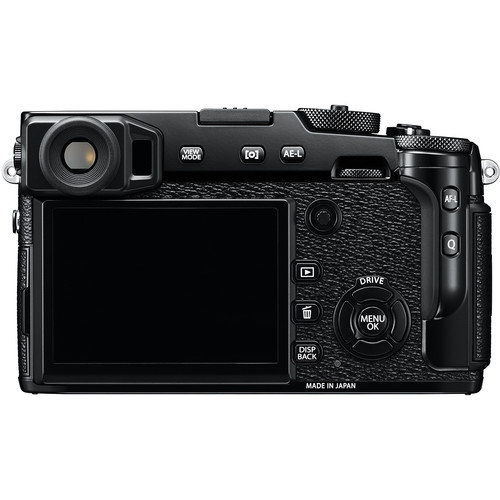
Fujifilm X-Pro2 Mirrorless Digital Camera
In 2012 when I reviewed the X-Pro1, my only experience with Fujifilm X-Series cameras was with the X100 and X10. The image quality impressed me, but my lack of familiarity with cameras in this class caused me to give it a pretty harsh review.

Fujifilm XF 16-55mm f/2.8 R LM WR Lens
Fast forward to 2016 and I’m a happy owner of a X-E2 and I’ve got experience reviewing over a dozen Fujifilm cameras so my opinions are very different. This time I’m also pairing it with the much more practical Fujifilm XF 16-55mm f/2.8 R LM WR zoom instead of the razor sharp Fujifilm 35mm f/1.4 XF R prime lens.
Why?!!!

X-Pro 2 Hybrid Viewfinder Design
While I love a lot of things about this camera, with all of the offerings in Fujifilm’s X-Series line up, I still scratch my head and wonder why this model exists. A big chunk of its cost is related to its hybrid viewfinder which allows a practical electronic viewfinder and an utterly useless rangefinder style optical viewfinder.
Yes, if you are a masochists and enjoy seeing the barrel of your lens and your thumb when viewing optically for an image that looks nothing like what you’ll actually capture, then I guess it makes sense for you. However, anyone in their right mind is going to switch to the excellent electronic viewfinder and get an image that actually represents the photo you’ll actually be taking.
I felt this way then and 4 years later I still find this style of optical rangefinder viewfinder to be an artifact from photography’s past that should be long forgotten. I see no point in not being able to see through the lens and see what happens when I turn the focus ring or zoom (although this camera does at least have an overlay to help with that).
The good news is that this camera comes with an excellent electronic 2.3 million pixel viewfinder that feels far superior to its predecessor. As a result you see a beautiful image that does in fact represent what you’ll actually see on the computer. However, the X-E2s has the same resolution viewfinder so wouldn’t that mean this is like the X-Pro1 vs X-E1 all over again where you pay a premium for a useless optical viewfinder?
Well fortunately, that’s not the case this time. Fujifilm has learned from its mistakes it seems and now has added a higher resolution sensor, an extremely useful joystick, improved autofocus and more (see here). As of the time this article was written, this was the best Fujifilm body available, but one can’t help but wonder (and hope) the replacement for the X-T1 will be this and more. If that happens, we’ll be back to my why question again – why would anyone really want this model? For now, the answer is obvious when you see the rest of my review – but I think it’s reign as being at the top of the Fujifilm X-Series line will be short lived (or so I hope).
What I love about the X-Pro2

Proper Selector Buttons
While I still think that the overall controls of the X-T1 make it the most desirable Fujifilm camera on the market, I absolutely hated its horrible selector buttons.
It is with abundant joy that I can report that the X-Pro2 features wonderfully responsive selector buttons like its predecessor. In fact, the rear panel features an extremely useful joystick for changing the autofocus point as shown here:

X-Pro 2 Rear Panel with Joystick
With 196 contrast detection points and 77 phase detection points, you are now able to put your focus point exactly where you want it which is a huge improvement over most cameras made today.What’s more, the focus is outstanding – especially it’s auto modes like eye detection as shown here:

f/2.8 @ 55mm for 1/550 sec at ISO 400
I took this shot three times because I couldn’t believe it could automatically focus on my son’s eye so easily – but it did – all three times!
I was reviewing the Sony a6300 at the same time I was reviewing this camera, and I was blown away with how well both cameras managed to get eye focus so quickly and easily under tough circumstances. However, as good as the Sony was, the X-Pro 2 was better – way better – in this respect. I was floored!

f/2.8 @ 55mm for 1/125 sec at ISO 400
My head was outside of this log, but I just stuck the camera in and shot blind.
My faith in the AF system was justified, because it pulled off a shot that wouldn’t have been possible otherwise.
In all my years of reviewing cameras – including the mighty 1D X and D4s, nothing I’ve ever tested as performed so well in real life scenarios – and it does it automatically so that even a novice could nail the two shots above – amazing!
In fact, if I had a single word to summarize the X-Pro 2 it would have to be fast. The focus was fast, the burst mode was fast, the start up time was fast, and shutter lag was non-existent.
Aside from these points, it was pretty much everything that Fujifilm fans already love about the X-Series platform – improved.
Now for the bad news

f/2.8 @ 55mm for 1/1000 sec at ISO 3200
Black bear was sadly a black blob with the 1.0 firmware
(Photo taken in captivity at Northwest Trek)
Fujifilm is great at doing firmware updates to update customer concerns, but when I was field testing I didn’t have the luxury of installing the recently released 1.1 firmware. As a result, I found myself very frustrated with shots like the one above taken using the Standard Provia film simulation mode because my bear shot ended up being a huge black blob. Between the poor performance of the in-camera noise reduction at 3200 ISO (a common historical issue with Fujifilm) and extremely dark shadow areas, I ended up losing the opportunity for a decent bear shot.
While I could have set the Shadow Tones to –2 to compensate for this problem, I do my best in reviews to try to test the camera as close to out of the box as possible – excluding basic settings for aperture, shutter speed, and ISO of course.

f/2.8 @ 55mm for 1/125 sec at ISO 500
Similar issues were found in the highlights on some exposures as well making me wonder exactly what DRO Auto was really doing, as it certainly wasn’t protecting my highlights and shadows like the x10’s legendary EXR feature did!
Fortunately, these were both images that were easily correctable using the RAW thanks to Adobe Camera Raw 9.5 support for this camera.
I’m also still bummed that they haven’t added a pop-up flash to this camera. While pop-up flashes do suck, sometimes it is better than nothing it at all. That could have saved my bacon for shots like this where I didn’t realize the default auto ISO max sensitivity was set to 800 for Auto 3:

f/5.6 @ 26mm for 1/10 sec at ISO 800
Not realizing this at first, I found myself shooting at 1/10 of a second for many shots when I was indoors, so I only ended up with one reasonably sharp interior shot:

f/5.6 @ 19mm for 1/10 sec at ISO 800 – Handheld
It was a user mistake which happens sometimes when going forth between two cameras at the same time (remember, I was also reviewing a Sony a6300 at the same time). However, I’m puzzled why a camera in 2016 would top out its ISO at 800 and find it reasonable to go to 1/10 sec shutter speed. It would be fine if I were on a tripod, but in the real world you get burned with settings like these. As a result, I became more careful to watch the auto logic of this camera.
Real World Shots
People don’t read manuals and they rarely take time to learn how to use their cameras. When I test, I like to have a combo of brain dead shooting scenarios (like many would do with cell phones) sprinkled with some serious shooting where I actually dial in all settings manually. This results in what I call real world shots because they are unplanned, unedited shots that just occur during the course of everyday life.
I hope you enjoy them compared to the heavily processed shots found elsewhere as they more closely represent what real people will really get out of this camera if they were to take it home and use it themselves.
The shots below and elsewhere in this article are completely unedited in-camera JPEG’s that feature camera defaults unless otherwise noted. These images may be viewed when reading this article, but you may not print, edit, modify, redistribute, etc… any of these images in any way. They are copyright Ron Martinsen – All Rights Reserved.
Click the photos to see full-size, unedited original in-camera JPEG’s.[And yes, I did shoot raw too – they just aren’t on the web].
Click here to get a full gallery of images taken while I was reviewing this camera..

f/10 @ 55mm for 1/400 sec at ISO 200
Aside from needing a faster shutter speed (user error), the X-Pro 2 did everything right for this first shot I took with this camera. That bug is alive too, hence the slight motion blur.

f/2.8 @ 36mm for 1/100 sec at ISO 200
Babies are tough to photograph because they never stay still, but the auto focus on the eyes impressed me from the first few minutes I used this camera. Any parent or grand parent who has tried to take this shot knows just how easy it is to get blurry eyes, and the shutter lag of the original X-Pro 1 would have certainly resulted in a missed opportunity. Not anymore!

f/2.8 @ 45mm for 1/600 sec at ISO 200
Wild boys are even worse, but once again the X-Pro 2 just nailed it

f/5 @ 40mm for 1/210 sec at ISO 200

f/2.8 @ 19mm for 1/210 sec at ISO 200
Thanks to a APS-C sensor, you get some blurring at f/2.8…

f/5.6 @ 19mm for 1/60 sec at ISO 200
… but at as little as f/5.6 you’ll get a lot of things in focus,
so don’t expect full-frame DSLR bokeh

f/2.8 @ 55mm for 1/1000 sec at ISO 200
Sadly the continuous auto focus mode loses facial tracking, and the zone tracking wasn’t up for the task. While I could probably get better results if I had more time with this camera, typical parents should expect a lot of blurry shots of running kids even at 1/1000 sec.

f/2.8 @ 29mm for 1/950 sec at ISO 400
After I got more comfortable with this camera, I was able to have better results for action series like these monkey bars shots. While it’s no 1D X or D4s, it did bring home more keepers than any previous Fujifilm I’ve tested.

f/2.8 @ 55mm for 1/250 sec at ISO 200
Velvia film simulation still has a place, and it’s definitely with the flowers!

f/2.8 @ 550mm for 10/640 sec at ISO 400
This was pretty much how I felt every time I took a shot of moving people while using this camera. It nailed the auto focus on the eyes almost every time!

f/2.8 @ 24mm for 1/500 sec at ISO 400
Another blind shot that makes it look so easy that you start to believe
that even a 5 month old baby can do a selfie with this camera!

f/2.8 @ 18mm for 1/550 sec at ISO 400
Again, it struggled with the slide as face mode must be disabled for continuous shooting.
Out of six attempts, I only had one series turn up any relatively in-focus shots. With my DSLR’s (including the Nikon D7200), it’s much easier to get an in-focus action shots

f/2.8 @ 17mm for 1/2200 sec at ISO 400
Even in low contrast light, it nails the focus.
Most cameras would have picked a subject in the background, the had or jacket to focus on.
I was continuously impressed with the eye focus feature.

f/2.8 @ 53mm for 1/1000 sec at ISO 200
A massive crop from the original (click image), still results in usable images for the web when you find yourself with the wrong lens on a moving tour bus

f/8 @ 55mm for 1/500 sec at ISO 400
Fujifilm cameras are loved by landscape shooters,
and this shot from a moving bus reminded me why I love them too.
The in-camera processing dishes out JPEG shots that are delicious,
and unfortunately hard to reproduce with the RAW.

f/11 @ 55mm for 1/400 sec at ISO 200
Quick snapshots like this made me wish I had a tripod and more than a few seconds to spend with tis camera in the mountains, as I think it will do spectacular even at f/11 when you can set up on a tripod and dial in the focus just right

f/4 @ 55mm for 1/640 sec at ISO 400
Fujifilm cameras have this magic that makes you see the world differently.
They make you stop, notice and capture things
you’ve walked past hundreds of times without noticing.
The X-Pro 2 brings that magic back to every day life.
Click here to get a full gallery of images taken while I was reviewing this camera..
Conclusion

Yes, you can capture that fleeting moment with the X-Pro 2
– even without looking through the viewfinder –
it’s that good!
Life gives you split seconds to capture that decisive moment, but for a long-time Fujifilm cameras weren’t up to the task. The AF struggled to acquire focus, the start up times were painfully slow, and the shutter lag meant any good kids shots were pure luck.
With the X-Pro 2, those dark days are over. I found myself getting spot on people shots (even with closed Asian baby eyes), so I started to trust this camera and experiment more. It rarely let me down, so I really enjoyed reviewing this camera.
Click here for part II, where I’ll do some bookshelf tests and share my final thoughts. I’ll also compare it to the Sony a6300 which I had initially thought would blow this camera away.
Where to order
Click here to learn more or order the X-Pro 2 on the B&H web site, or click here to purchase the Fujifilm XF 16-55mm f/2.8 R LM WR Lens.
Other articles you may enjoy
If you enjoyed this article, you may also enjoy these camera and lens reviews:
- Fujifilm X-Pro 2 – The Best Fujifilm Camera To Date (Part II of II) and Fujifilm XF 16-55mm f/2.8 R LM WR lens
- Fujifilm X30
- Fujifilm X100s
- Fujifilm X-E2
- Fujifilm XPro-1
- Fujifilm XQ1 (vs X20 & Canon s110)
- Fujifilm X-S1
- Fujifilm X-T1 (includes 18-55mm & 23mm lens reviews)
- Fujifilm X-E1, X100s, X20 & X10 Compared
- Fujifilm XF 56mm
- Fujifilm XF 10-24mm
- Fujifilm XF 50-140mm f/2.8
- Nikon D7200 (and older model links)
- Olympus OM-D E-M5 Mark II with 12-40mm PRO
- Panasonic DMC-G7 (Features 4k Video)
- Sony a3000
- Sony a6300 (includes 16-70mm lens)
- Sony a7 (includes Samyang lens)
- Sony a7R Mark II with 24-70mm
- Sony DSC-RX1 (Full Frame Compact Camera)
- Sony DSC-RX10
- Sony RX100 IV (Sony RX100 III)
Disclosure
If you make a purchase using links found in this article, I may make a commission. It doesn’t cost you a penny more, but it does help to support future articles like this.

5 comments:
Ron,
There are photographers out there who don't use Auto anything, don't need a lens longer than 50mm and therefore don't need a silly big zoom lens, and actually prefer an optical viewfinder. A lot of them shoot Leica's (I will assume you have heard of that brand) and you can find their work hanging in major museums all over the world. For those of us who can't afford a Leica, the X Pro2 is a reasonable compromise. Just saying. The only thing Fuji is missing is a 35mm equivalent F2 lens for the X Pro2.
Xpro1 is a great deal for those photographers.
Ron, which film simulation did you use for taking photos of your children? Fantastic tones....
a.,
I usually do Provia or Velvia. Velvia tends to crush the hair so you can make adjustments to the shadows to compensate for that in-camera, but in these shots I refrained from doing that. The easy way to spot the Velvia ones are when Kai's dark hair has crushed blacks.
The beauty of Fuji is its in-camera color, and sadly Adobe can't seem to get that right with its RAW (RAF) file processing, so always shoot RAW+JPEG with this camera.
Ron
Thanks
Post a Comment